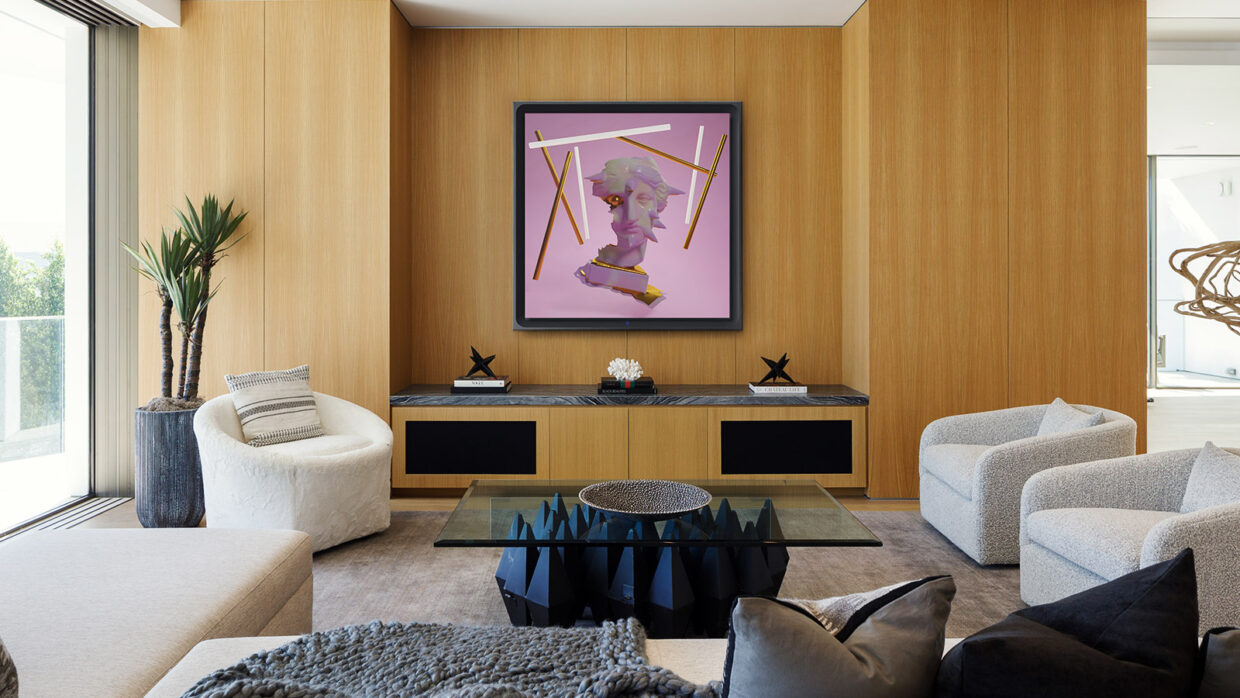When NFTs first exploded onto the scene in 2021, one of the first questions on many buyers’ minds was how they could display their digital art. As valuations for many NFT collections quickly climbed during 2021, the technology to display them steadily emerged. A year on, products to display NFT artwork are becoming more common as more venues source ways to stage in-person NFT exhibitions and collectors are increasingly eager to physically showcase what they’ve purchased. The latest to enter the space? Danvas.
Launched earlier this month at the Armory Show in New York, Danvas bills itself as the “first luxury digital display,” with its Series G frames rendering digital artwork in micro-LED technology. “We really see this as an entirely new product,” Jeanne Anderson, CEO and Co-Founder of Danvas, tells Jing Culture & Crypto. Digital displays for NFT artwork, she adds, represents a growing market which will continue to evolve as more artists join the space.
A growing market for blockchain hardware

The Series G frame by Danvas is billed as the “first luxury digital display,” which renders digital artwork in micro-LED technology. Image: “Fragments of an Infinite Field” by Monica Rizzolli / Stephan Julliard
To Anderson, the mainstreaming of NFT art points to “the beginning of a digital renaissance.” This spike in digital art commerce has led to a burgeoning of hardware offerings answering an apparent need to give NFTs physical form. Tech giants from Samsung to LG are offering smart TVs equipped with QLED and OLED displays that can be linked to their respective NFT platforms, and startups such as Infinite Objects and LAGO are creating tailor-made showcases for digital art.
Consumers are not the only target audience for these display frames. The increasing number of NFT galleries, as well as cultural venues hosting NFT art exhibitions, is supporting the development of the digital display industry.
The SuperRare Gallery in New York, for example, boasts display partners including Samsung, Meural, Blackdove, and Planar. Meanwhile, TokenFrame, a display company first started in Puerto Rico, has been one of the leading manufacturers and sellers to galleries across the world including the Web3 Gallery in New York, the NFT Gallery in London, and Metacollect Gallery in Australia.
MetaSill, another display company, has taken one step further to create displays that are interoperable, meaning they can connect to tokens on different networks such as Solana and Tezos. This opens the market up even wider because it allows galleries and venues to feature work by artists who don’t work on the Ethereum network exclusively.
Framing the code

The increasing number of NFT galleries and exhibitions have supported the growth of the digital display industry. Image: The Web3 Gallery, which works with TokenFrame / @web3nycgallery on Twitter
Where organizations once balked at the technical expertise required to stage a digital art show, these displays present a solution to what might be a challenging installation. More so when the frames themselves are NFT-ready.
These displays often track and provide provenance of each token so viewers know that they are observing the original artwork and not being presented a fake counterfeit piece. They can also see the history of past holders digitally, giving them better insight into who has held that token in the past and what kind of stories come along with that knowledge. On Danvas, artworks are cast from the Danvas app, which houses a library of digital art that is linked to a user’s crypto wallet.
Additionally, according to Anderson, displays add an extra layer of due diligence because “it makes sure to reinforce the fact that the artist has gotten a royalty for the sale of this artwork and has been paid.” Royalties are a huge part of the attraction for artists because they are unique to NFTs.
What might be a barrier to wider consumer adoption of these displays remains their price tag: Danvas’ Series G frame retails at $34,500, while offerings by LG and Blackdove go for upward of $1,400. Smaller frames, though, could start at around $200, putting them within better reach of collectors. But for now at least, digital canvases largely remain luxury assets for luxury consumers (or organizations), with the further growth of the sector hinging in no small part on accessibility.



